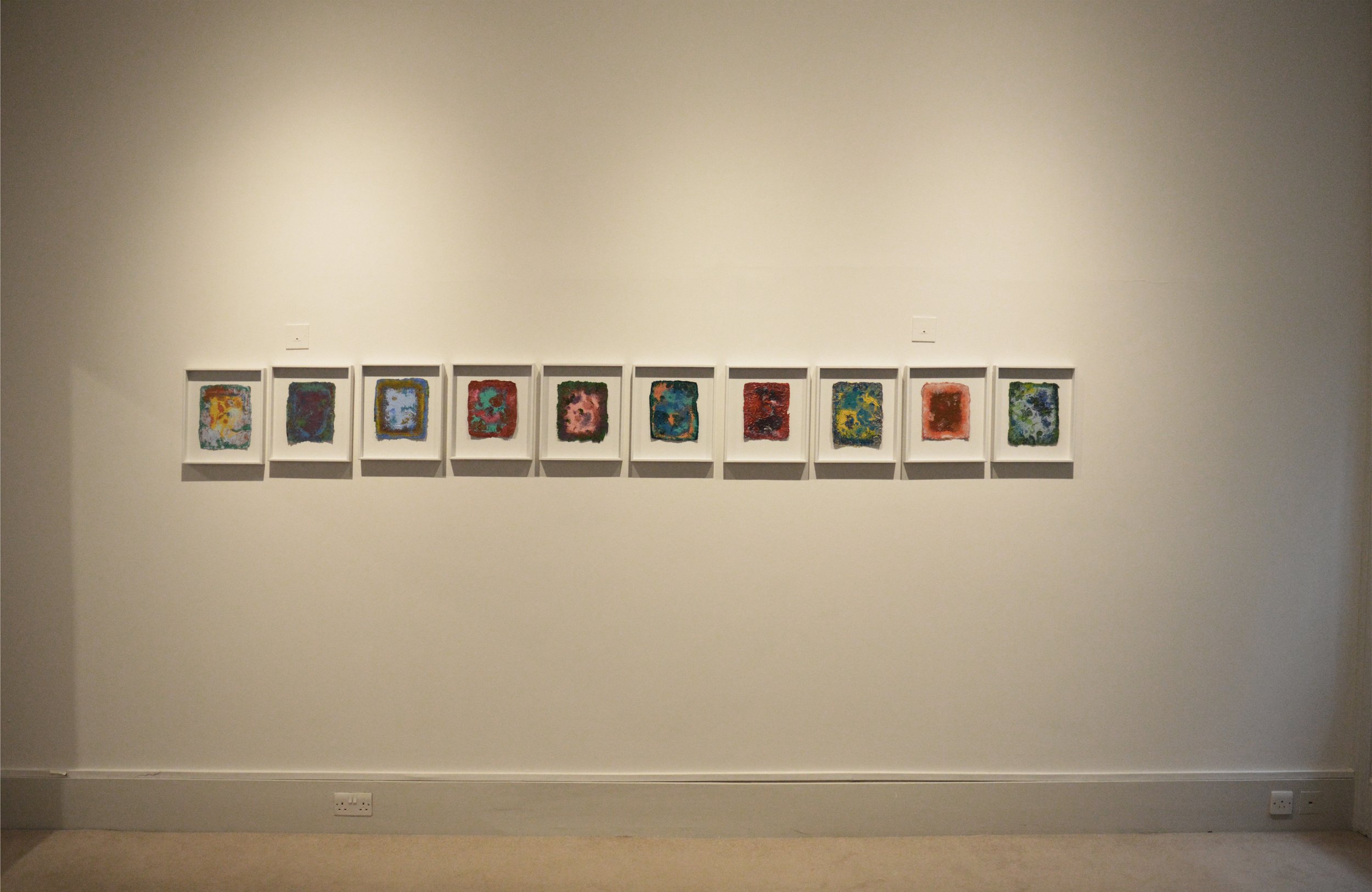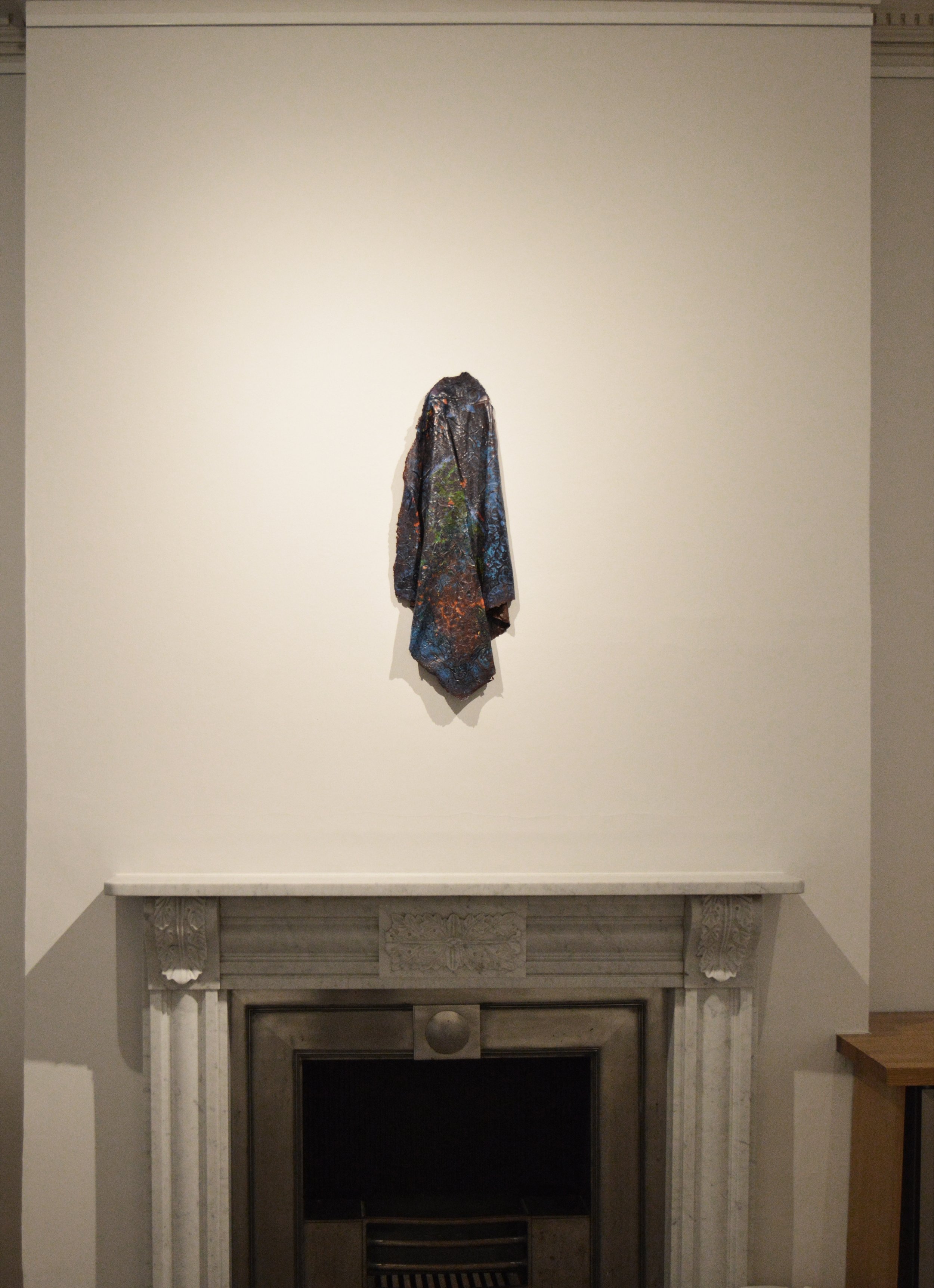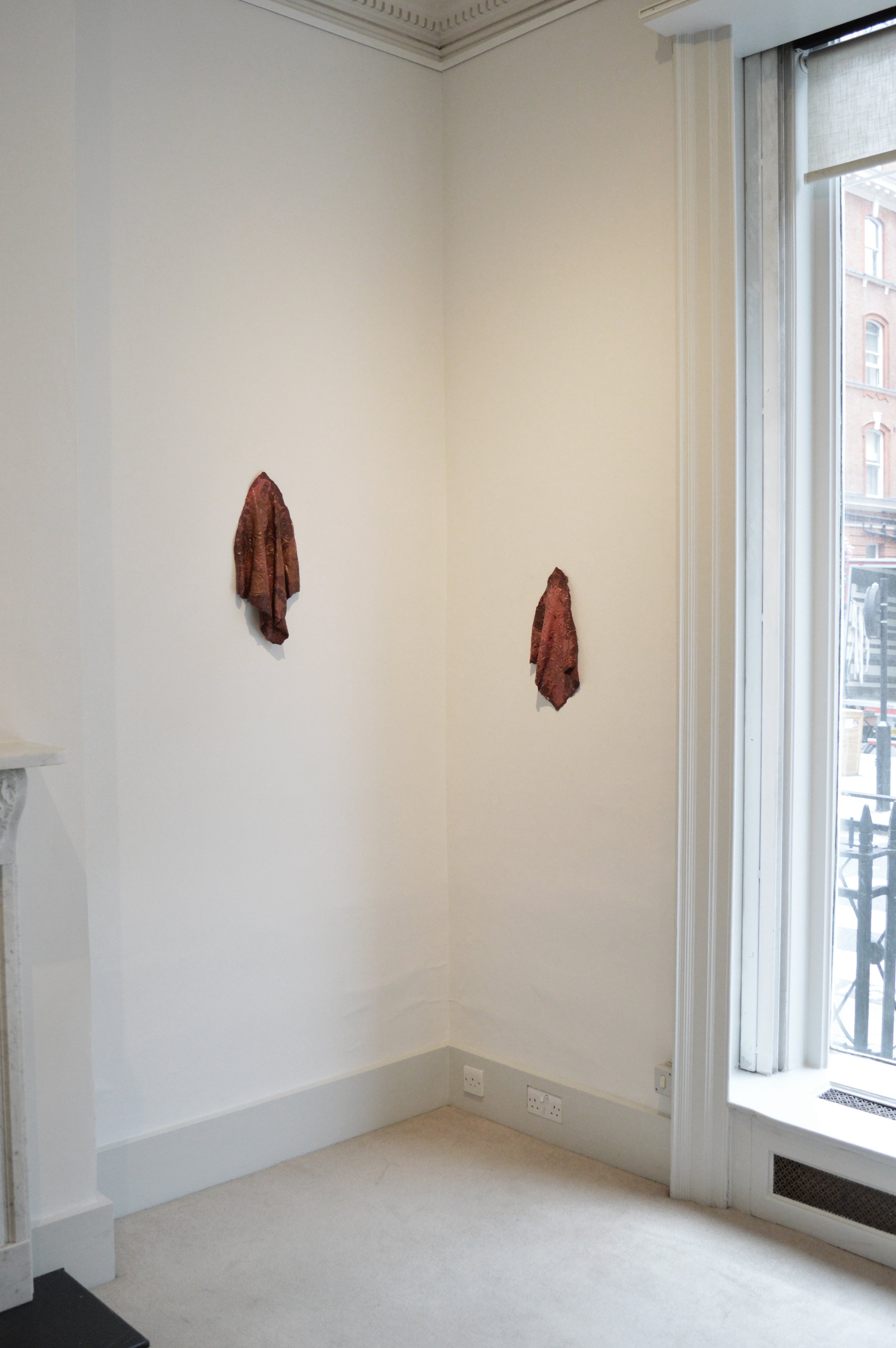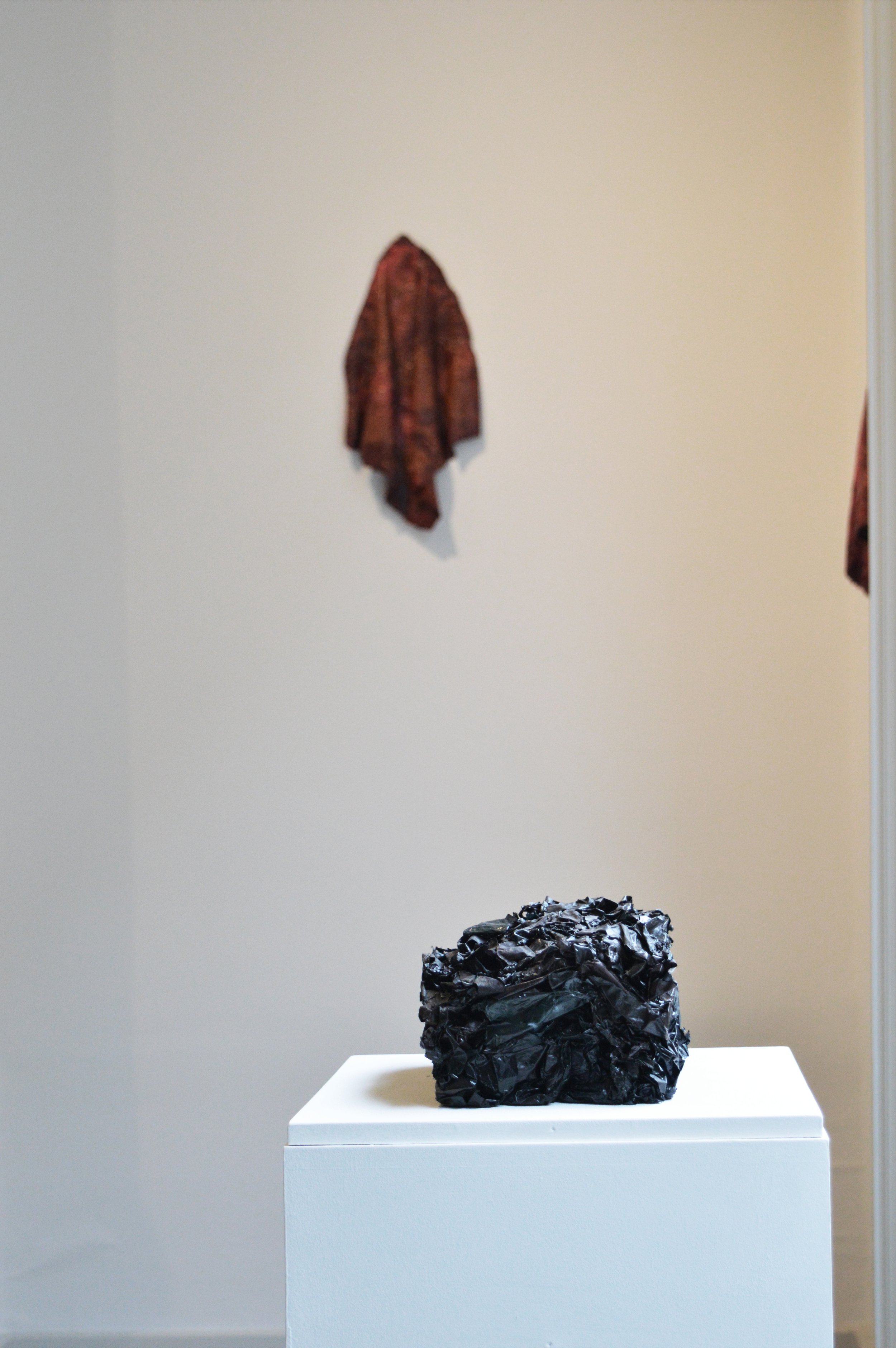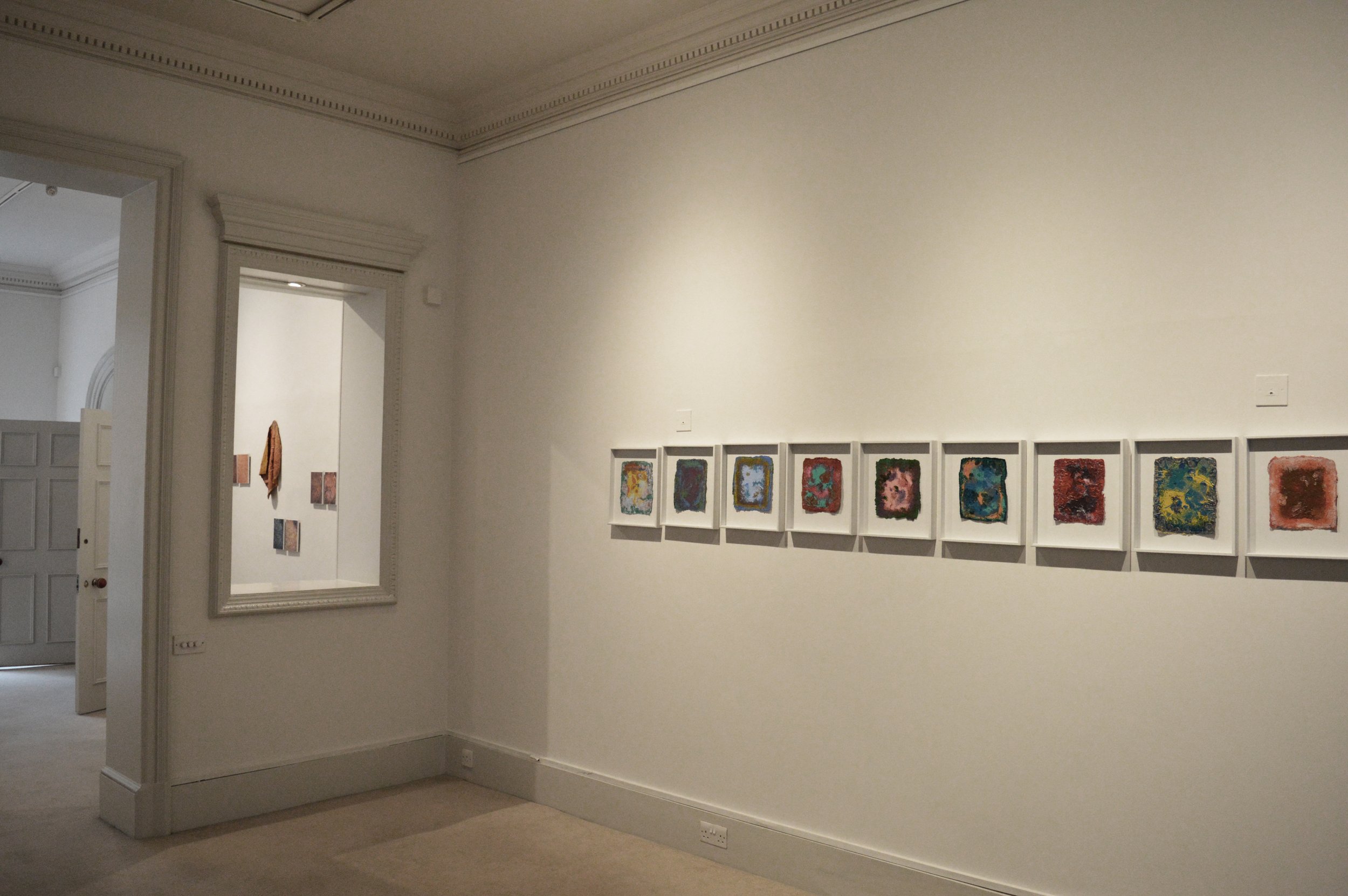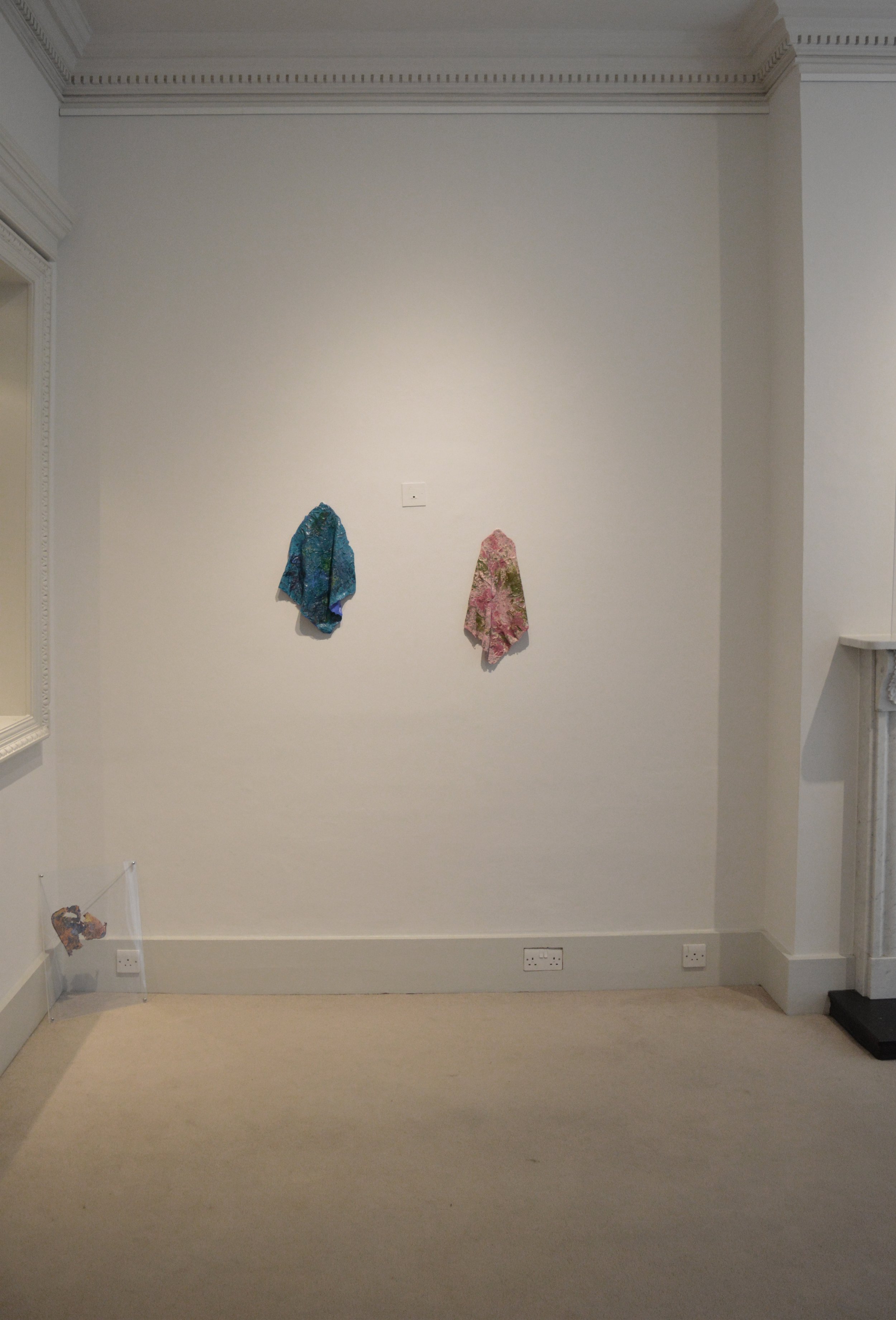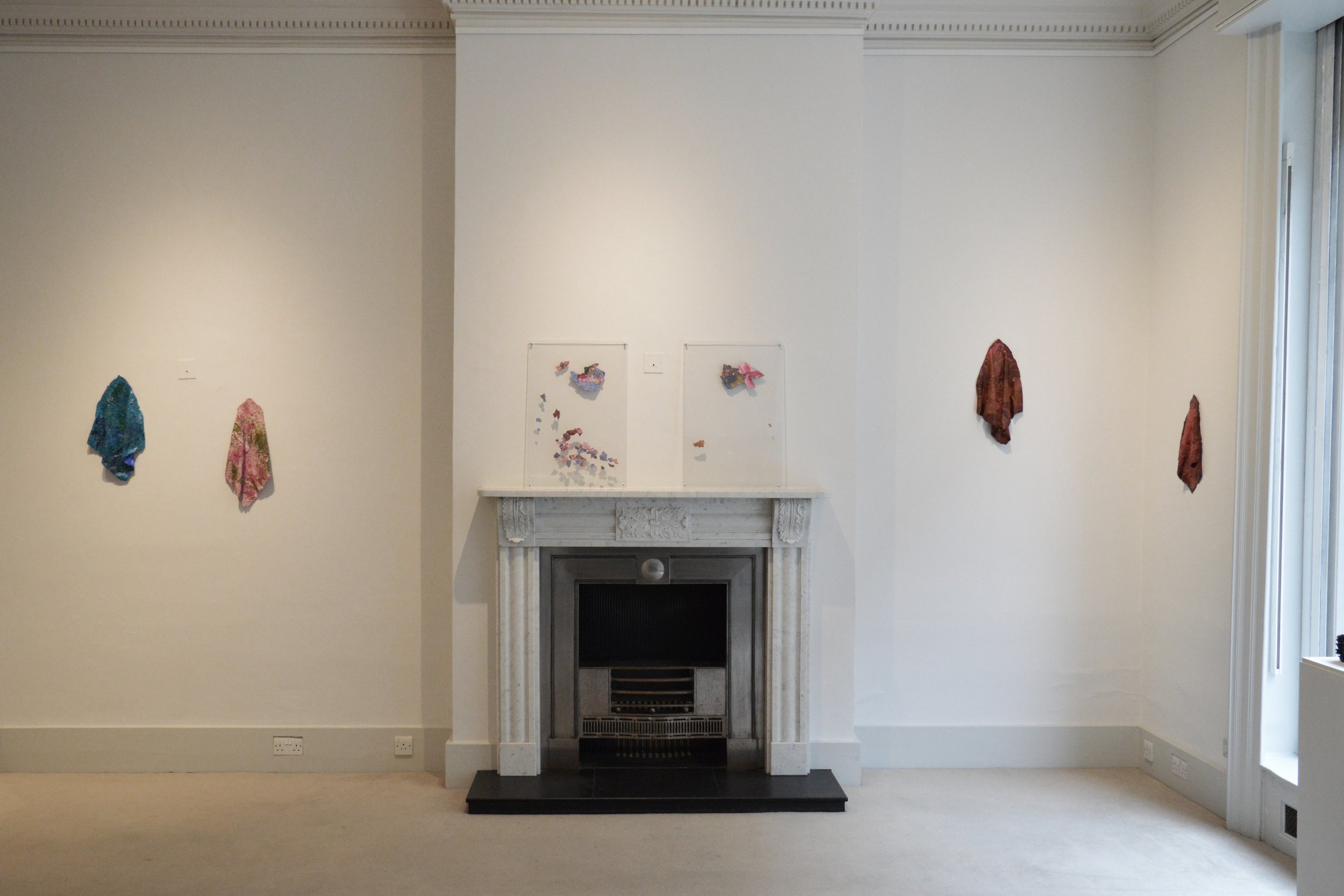
A Foreign Place
Eva Chiara Trevisan
18.04.2023 to 06.05.2023
D-Contemporary, Mayfair, London
Curated by Raffaella Matrone
Artist solo show: Eva Chiara Trevisan
Exhibition Catalogue (ENG + ITA)
Review by Margherita Nussio on Culture Future Mag (ITA)
Photos courtesy of D-Contemporary
D Contemporary is pleased to present the first UK solo show of Italian-Spanish visual artist Eva Chiara Trevisan. The exhibition showcases a selection of pre-existent and newly produced works.
Eva Chiara Trevisan’s research focuses on the dynamics of the material used, through an exploration of the alchemical processes of the transmutation of matter.
The relationship with matter is the generating force behind the thought, triggering the dialogue between tactile sensation and visual perception. Conceiving her artworks from an experimentation of the extreme use of acrylic colour, her works unfold in a progressive flow evolving from painting to sculpture and installation. These media are also used as a tool for creative research, through the investigation of the relationship between matter and time, gesture and colour; on the lookout for breaking the boundaries of space and fluidity.
Trevisan is currently facing the challenge of removing the canvas from paint with the aim of disengaging it from the technicality of its base, in order for colour to become the sole protagonist of the work, as well as its own support. This is possible through the method of stratification, where the layers of colour are laid one upon the other until it deposits, becoming a compact and material sheet. The composition is also enriched by the signs left in the atelier from the previous works. Here the artist uses nylon panels as a work surface, from which the “sheets” of colour are later removed. The traces of the previous works are still present on the nylon, becoming incorporated and carried over in the new artwork.
This process observes the agency of time over repeated gestures, which are a balanced outcome of decisions and waiting.
Through a methodical and coherent research of exploration of space and matter, Eva Chiara Trevisan’s artworks transmutepaintings into sculptures, on a pictoric surface which recalls the materiality of Expressionist paintings. The colour - disengaged by its support and free of any other figurative elements - is the only focal point of the viewer’s introspection, fulfilling the artist’s deepest desire of taking the viewer to a place where memory emerges slowly and intermittently, leaving unclear thoughts and feelings.
In 2020, while testing the technical possibilities of disengaging the colour from its support, the artist’s attention starts shifting to the idea of something that is inevitably left behind. While the concept of stratification creates new material, the action of the gesture produces something else: a trace, a footprint of the process, which investigates the alchemical transmutation and the philosophical theory about void.
Seminal for this research is the work A veces se me pasa el tiempo (Sometime Time flies me by), where the liquid colour is laid down on a PVC support until it is shaped as desired, then the drying phase starts to stabilise the matter. Layer after layer, the colour turns into a film and solidifies through stratification.
From the offcuts of this work and others – not on show at D-Contemporary - Cascami (Off Cuts) is produced. The piece is formed of numerous fragments of colour pressed together and then collected in a box where, after having been squeezed for several months, these strips create a somewhat dense block. Cascami is another representation of a non-place where materials and forms are blurred. Bidimensional textures become tridimensional and liquid material shapes as solid.
Throughout 2021 and 2022, Trevisan's research evolves on an independence of the material not only from its support, but also from its past. The layered colour finally becomes sculptural in a metaphysical evolution and material sublimation. In Camera con Vista (Room with a View) the viewer is guided to discover the depth of alchemic sublimation through a sort of bewilderment, whilst being led to find himself in a dimension of nothingness and emptiness, within and outside the material, which is its own immanent and temporary place.
From this series of work, the artist realised that she managed to disengage the colour from its support and started exploring how can she now break the boundaries between painting and sculpture. The first example is visible in Senza Titolo (Untitled) 0, where a small painting produced with the same stratification technique has been scrunched to get a more tridimensional shape.
In Plasticità dell’Informe (Plasticity of the Shapeless), Trevisan further manipulates the matter with the aim of shaping it as a fabric. Here the artist does not only shape the colour by making it sculptural, but also tries to transform it – at least in its appearance – into another object and material. Veils and drapes are recurrent elements in History of Art and by referencing this both from painting and sculpture, the artist aims to reproduce the chiaroscuro element in its work. As a perfect balance between the two artistic subjects, Trevisan works and shapes the creases horizontally on the floor with the aim of making them more natural when exhibited vertically on a wall, working on an opposite process compared to classical painting techniques.
All these new processes will inevitably create more offcuts that the artist promptly archives. By collecting a few fragments and displaying them in between the plexiglass panels, Tempo in Movimento (Time in Movement) comes to life. This work refers to the time that the artist spends in the studio, meaning that the work is not just a segmentation of previous works but also a testimony of the time spent in the atelier. This is not the time of the artist but more the time of the space she works in, perceived as something in constant flux like the pieces that move in between the plexiglass. By shifting the work like an hourglass, the fragments will be mechanically activated, creating a constantly different pattern.
Slightly shifting focus from the materiality of the works, in Contemplazione dell'Impurità (Contemplation of Impurity), the artist analyses colour in a less material perspective; taking the back of some works from the Camera con Vista series (which is usually hidden to the viewer) and printing it on ceramic. Investigating the use of other materials and techniques like photoceramics, Trevisan explores the possibility of colour on ceramic, another material dear to her.
Through these works, Eva Chiara Trevisan takes us on a journey to a foreign place, teaching us how to look deeper into what appears in front of our eyes and observing it in all the shapes in which it can manifest itself.
